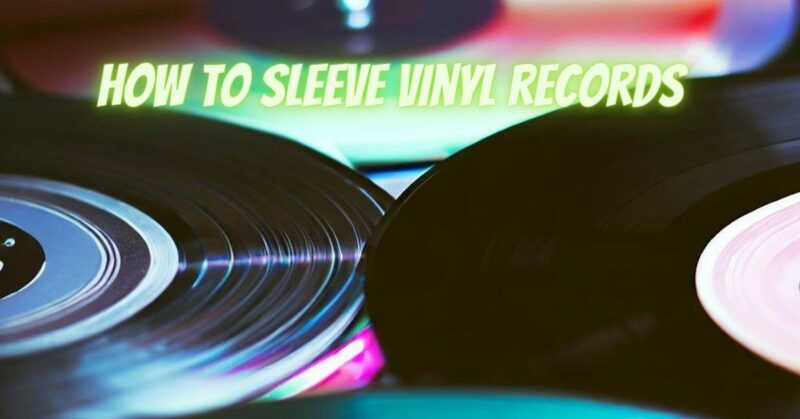Vinyl records are not just sources of music; they are delicate artifacts that deserve careful protection. One essential step in maintaining the longevity and quality of your vinyl collection is properly sleeving your records. This article provides a step-by-step guide on how to sleeve vinyl records, ensuring they remain free from dust, debris, and potential damage.
Why Sleeve Your Vinyl Records?
Sleeving your vinyl records serves multiple purposes:
- Dust Protection: Sleeves shield your records from dust, dirt, and particles that can accumulate in the grooves and affect playback quality.
- Scratch Prevention: Sleeving safeguards records from accidental scratches caused by handling or contact with other surfaces.
- Groove Preservation: Proper sleeves prevent friction and wear on the grooves, preserving the sound quality of your records over time.
Materials You’ll Need
- Record Sleeves: Choose high-quality, anti-static inner sleeves made of materials like polyethylene, polypropylene, or paper with anti-static coatings.
- Outer Sleeves: Transparent polyethylene outer sleeves provide an extra layer of protection against dust and moisture.
- Clean Workspace: Ensure your workspace is clean and free from dust and debris.
Step-by-Step Guide
1. Prepare Your Workspace: Clear a clean and dust-free area where you’ll be working. Wash your hands before handling your records to prevent transferring oils and dirt.
2. Remove the Record: Carefully remove the record from its original sleeve. Hold the record by its edges to avoid touching the playing surface.
3. Inspect the Record: Inspect the record for dust, debris, or fingerprints. Use a carbon fiber or anti-static brush to gently remove any particles from the surface.
4. Insert the Inner Sleeve: Slide the clean, anti-static inner sleeve into the original album cover if it fits. If not, place the inner sleeve alongside the album cover inside the outer sleeve.
5. Slide the Outer Sleeve: Carefully slide the entire package—album cover and inner sleeve—into the transparent outer sleeve. Make sure the album cover is facing outward for easy identification.
6. Seal the Outer Sleeve: If the outer sleeve has a resealable flap, seal it shut to protect the record from moisture, dust, and accidental slipping.
7. Label the Outer Sleeve: If desired, label the outer sleeve with pertinent information such as the artist, album title, and release year. This makes organization and retrieval easier.
8. Store Upright: Store your sleeved records upright on a sturdy shelf or record storage unit. Avoid placing them in areas prone to direct sunlight, heat, or moisture.
Maintenance Tips
- Regularly Clean Sleeves: Over time, sleeves can accumulate dust and residue. Clean both inner and outer sleeves periodically to prevent these particles from reaching your records.
- Replace Worn Sleeves: If your sleeves become damaged or show signs of wear, replace them promptly to maintain the protection they offer.
Sleeving your vinyl records is a simple yet crucial practice that ensures your collection remains in pristine condition. By following these steps and investing in quality sleeves, you’re taking an essential step towards preserving the authenticity, sound quality, and visual appeal of your vinyl records for years to come.

